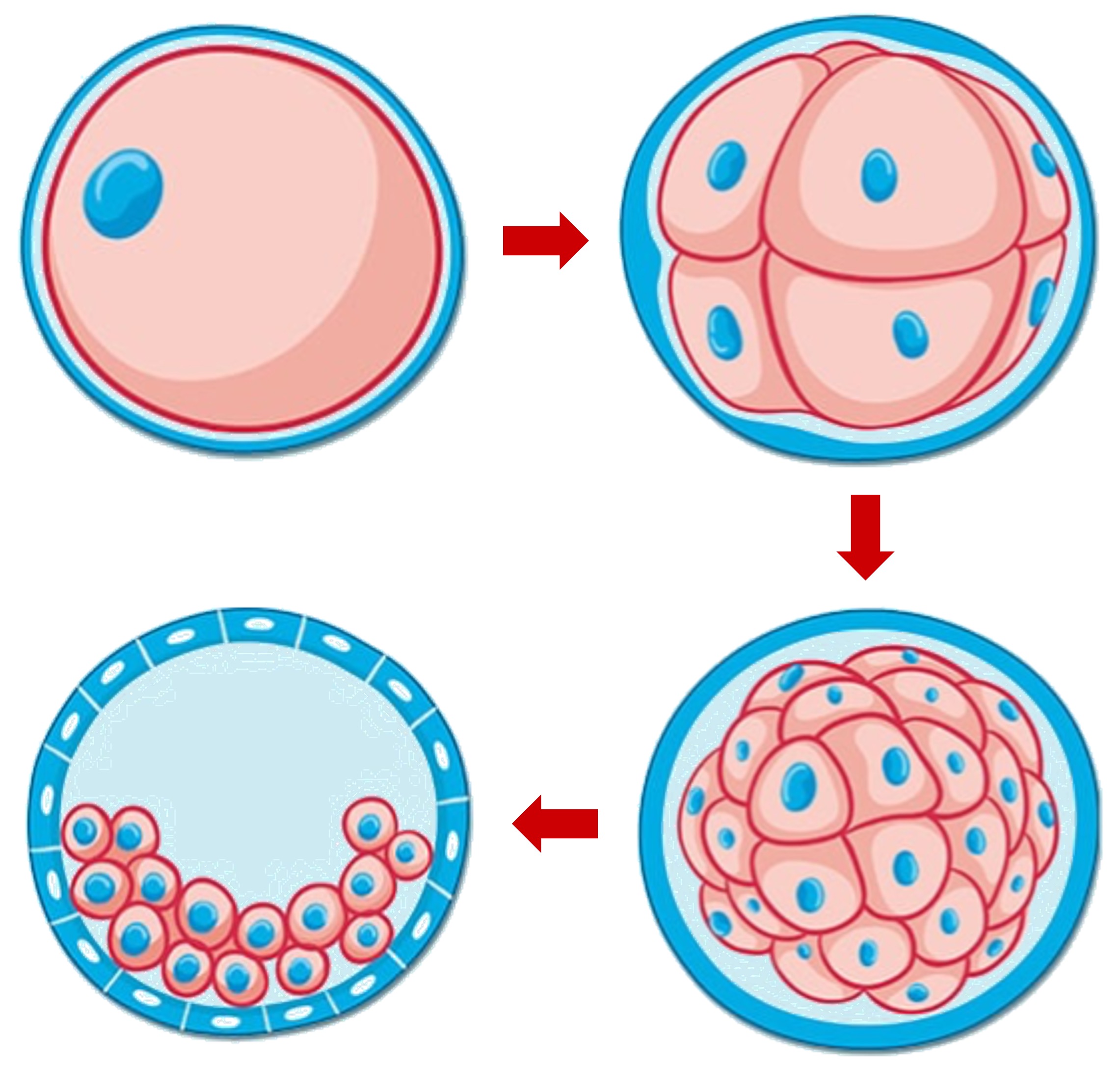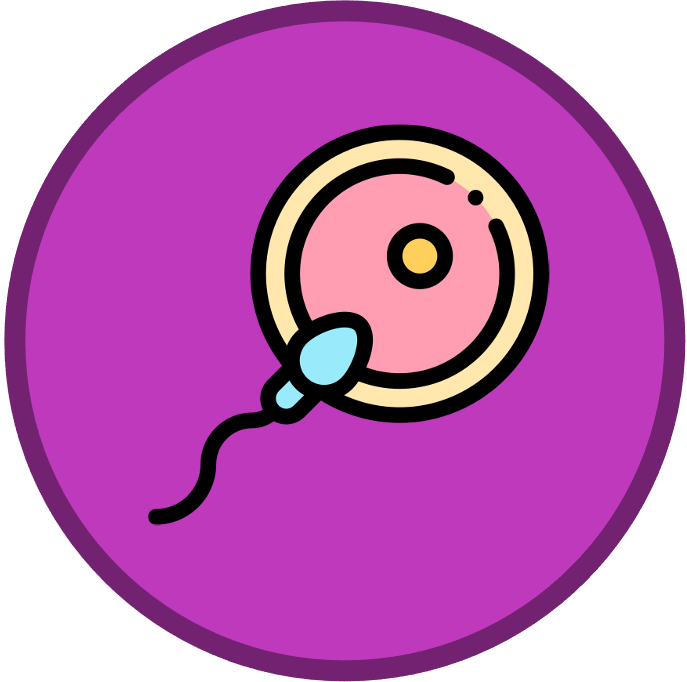

Blastocysts
Following the fusion of an egg and sperm, the diploid zygote will undergo several mitotic divisions to form a solid ball of cells called a morula
-
As the morula continues to divide, it undergoes differentiation and cavitation (cavity formation) to form a blastocyst
A blastocyst is comprised of three distinct sections:
-
An inner cell mass (that will develop into the embryo)
-
A surrounding outer layer called the trophoblast (this will develop into the placenta)
-
A fluid filled cavity called the blastocoele
The blastocyst travels via the oviduct to the uterus and implants into the endometrial lining (~ one week post fertilisation)
-
Digestive enzymes are released to degrade the endometrial lining, while autocrine hormones trigger implantation into the uterine wall
-
Once implanted, the blastocyst can derive nutrition from the endometrial tissue fluid and continue to the next stage of embryonic development
Blastocyst Development






